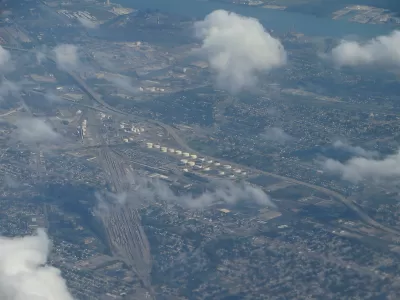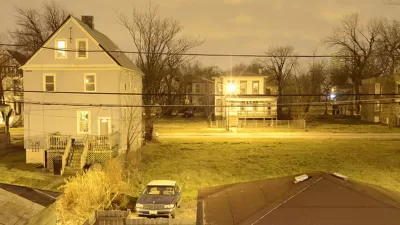Despite the decades-long activities of environmental justice advocates in the Motor City, low-income and people of color bear the brunt of pollution in Detroit.

Drew Costley writes in-depth on the growing environmental justice concerns in Detroit, where the city's most vulnerable residents are facing growing environmental risks in the air and water.
Environmental problems pervade the city of Detroit, the Blackest city in the United States, but particularly neighborhoods populated predominantly by low-income and people of color, and environmental risk is connected to larger concerns about environmental quality. "Detroit is a microcosm of the national and global crisis on climate change," says Michelle Martinez, coordinator of the Michigan Environmental Justice Coalition, which lobbies for a safer environment for the state’s most vulnerable groups.
Four of the state's top emitters of particulate matter sulfur dioxide and nitrous oxides are located in one zip code in the city, 48217, according to Costley. "A portion of I-75, one of the busiest highways in Michigan, runs along the northern border of the neighborhood. The neighborhood is nine minutes from the traffic-choked Ambassador Bridge, the busiest international border crossing in North America. Plans to open the new Gordie Howe International Bridge next to the Ambassador Bridge in 2020 are expected to increase diesel truck traffic by 125%."
The feature-length article visits numerous specific examples of polluters and the individuals living with the pollution, as well as the advocates fighting for environmental justice. The article is the first in a series published by OneZero titled "Black in the Time of Climate Change."
FULL STORY: The Blackest City in the U.S. Is Facing an Environmental Justice Nightmare

Planetizen Federal Action Tracker
A weekly monitor of how Trump’s orders and actions are impacting planners and planning in America.

Chicago’s Ghost Rails
Just beneath the surface of the modern city lie the remnants of its expansive early 20th-century streetcar system.

San Antonio and Austin are Fusing Into one Massive Megaregion
The region spanning the two central Texas cities is growing fast, posing challenges for local infrastructure and water supplies.

Since Zion's Shuttles Went Electric “The Smog is Gone”
Visitors to Zion National Park can enjoy the canyon via the nation’s first fully electric park shuttle system.

Trump Distributing DOT Safety Funds at 1/10 Rate of Biden
Funds for Safe Streets and other transportation safety and equity programs are being held up by administrative reviews and conflicts with the Trump administration’s priorities.

German Cities Subsidize Taxis for Women Amid Wave of Violence
Free or low-cost taxi rides can help women navigate cities more safely, but critics say the programs don't address the root causes of violence against women.
Urban Design for Planners 1: Software Tools
This six-course series explores essential urban design concepts using open source software and equips planners with the tools they need to participate fully in the urban design process.
Planning for Universal Design
Learn the tools for implementing Universal Design in planning regulations.
planning NEXT
Appalachian Highlands Housing Partners
Mpact (founded as Rail~Volution)
City of Camden Redevelopment Agency
City of Astoria
City of Portland
City of Laramie





























